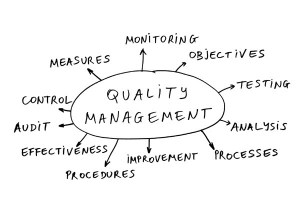Periodically, I am asked about the difference between ‘Agreed Action’, ‘Corrective Action’ and ‘Preventative Action’, and how one differentiates between them. A spate of these questions during recent Flintloque Management System’s installations has prompted me to do some serious thinking about the concepts involved.
Normally, when explaining the difference between agreed action and corrective and preventative action (CAPAs) to folk on-site at an installation, I go through the methodology by which the requirement for action is determined and then we cover how one decides into which of the above classes of action it falls. However, for the purposes of this essay, I’m going to do it the other way round; this blog will cover the definitions and the next blog will cover the trigger processes.
Within your management system, there should be three broad kinds of action:
- Agreed Action – this is required for the day-to-day activity that keeps your business running, e.g., contacting a customer to clarify their requirements, placing an order with a supplier, writing a report, etc.
- Corrective Action – as the name suggests, this kind of action is required to correct a failure that has occurred within your management system, e.g., changing a process as the result of a customer complaint, re-training an individual who was directly-responsible for a failure, etc.
- Preventative Action – required to prevent an anticipated failure from occurring in the first place, e.g., replacing a piece of equipment that is becoming progressively worn, increasing the frequency of internal auditing in a department that has been restructured, etc.
So, to summarise; agreed action has to be done routinely or, in fairly short order, you won’t have any customers and thus won’t have a business to run. The purpose of the corrective and preventative action (CAPA) is to modify your existing management system in such a way that the probability of the failure recurring, or the anticipated failure occurring in the first place, is reduced. It is this focus on the modification of the management system that allows us to differentiate between ‘everyday’ agreed actions, which do not need to be recorded in very much detail, and the CAPAs, which do. And that is what I’ll cover next time.

